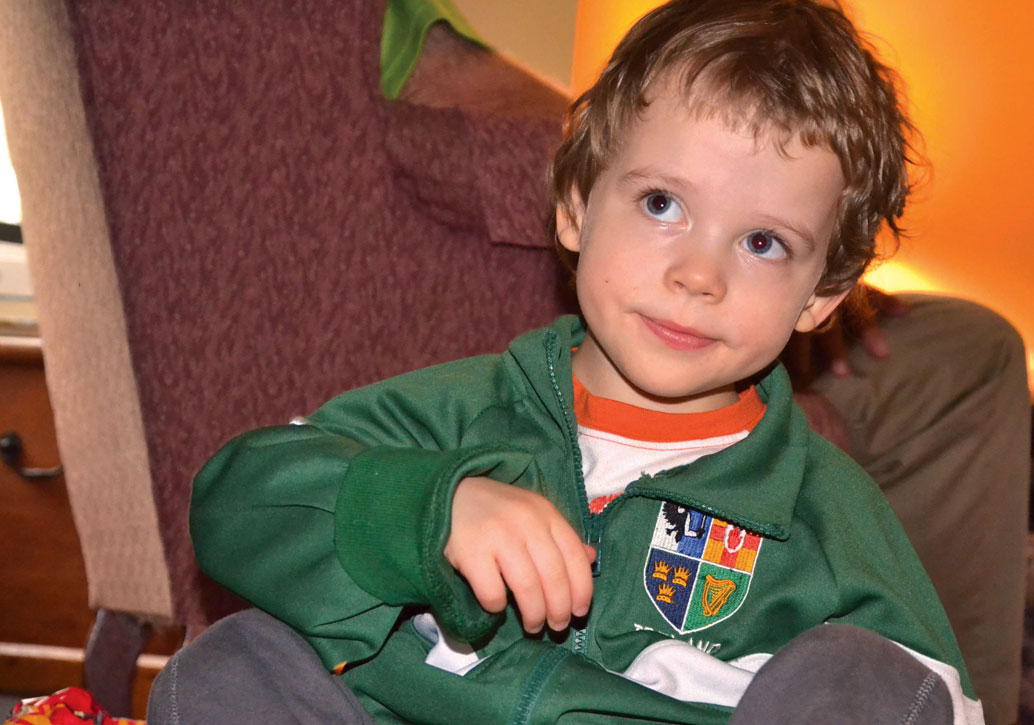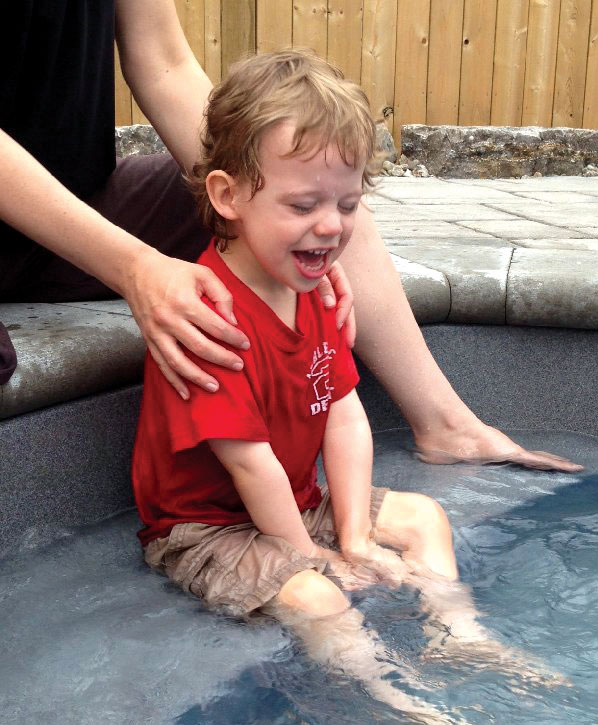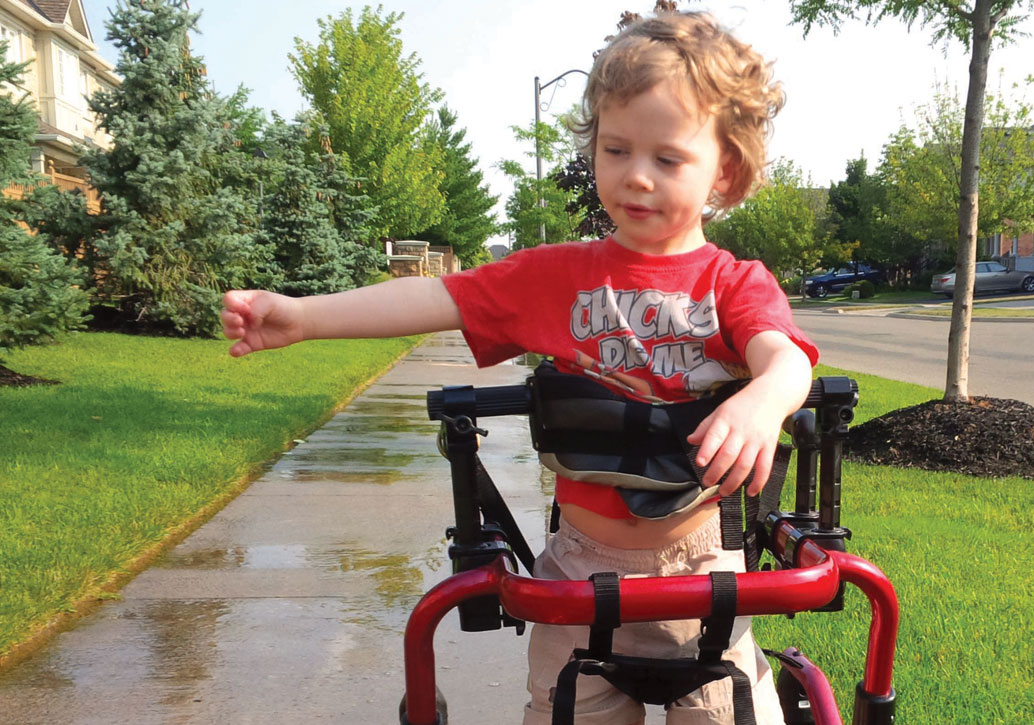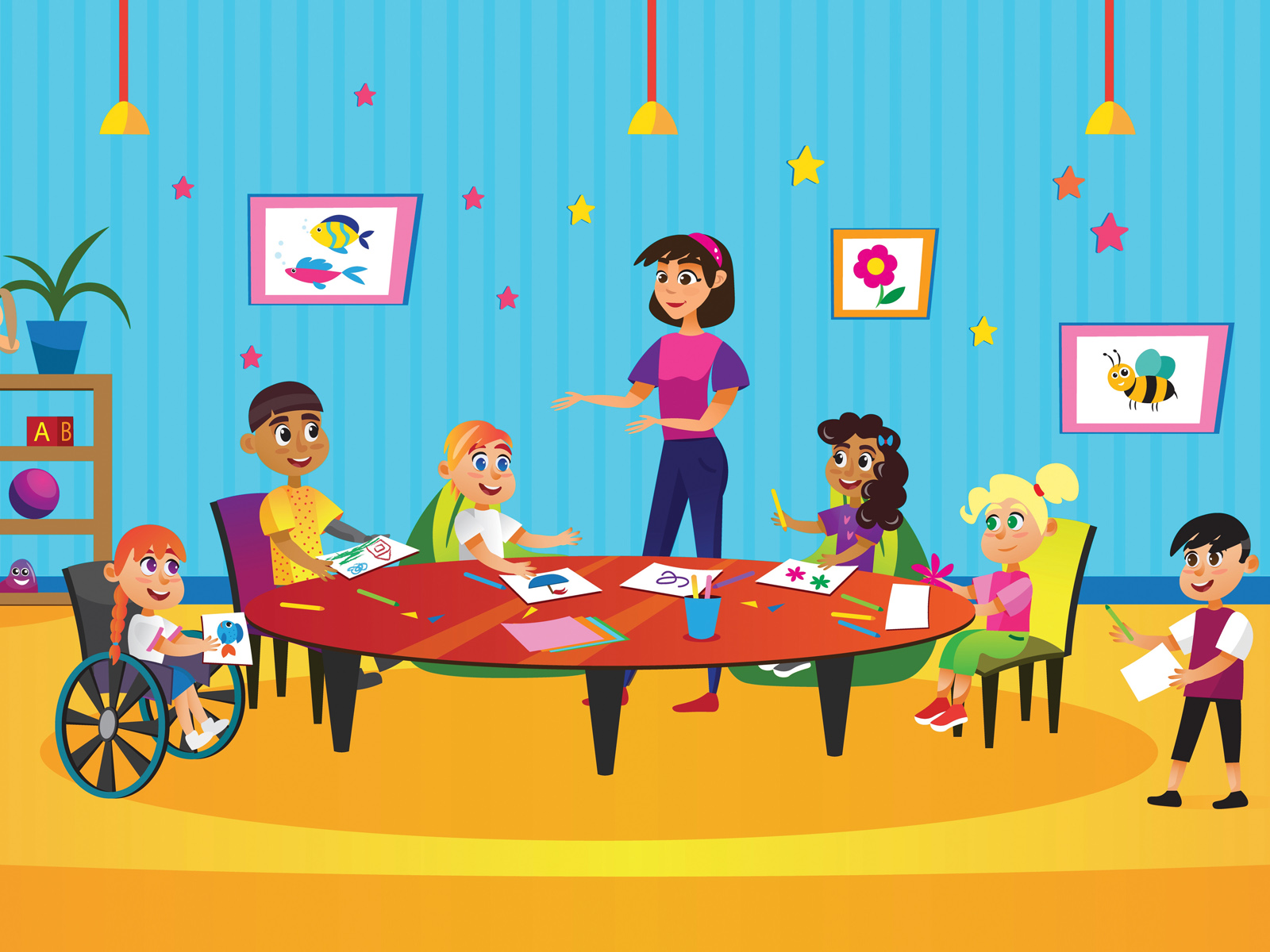Ryan came into this world on October 15, 2010. We took our beautiful boy and second-born child home the next day, completely oblivious to the secrets lying within his brain, body and eyes.
By Jen Quinlan Bangild and Michelle McClure
When he was about six weeks of age, we began to notice that something wasn’t quite right with Ryan’s eyes and movement, but we decided to give him more time to develop. At three months of age, he wasn’t reaching milestones as his sister had, so he was put through numerous tests including a cranial ultrasound, brain MRI, invasive ophthalmology exam and a lot of blood work. A couple of weeks later, we were told that our son was blind and would be limited physically and mentally in what he could do. “Take him home and love him,” we were told—so that’s what we did…and then some.
Ryan was diagnosed with two conditions: a rare neurological condition (affecting one in 10,000 births) called septo-optic dysplasia, which causes underdevelopment of the optic nerves and pituitary gland; abnormal brain development; and hypotonia or decreased muscle tone. If that diagnosis weren’t challenging enough, at 10 months of age he was hit with a catastrophic form of epilepsy called infantile spasms. His prognosis immediately became much more grim. Then, at 28 months, he was diagnosed with autism.
 Living with Ryan
Living with Ryan
It’s difficult to watch your child struggle daily with things that so many of us take for granted. However, there is a flip side to this: being able to experience and appreciate “inch” stones (the special needs version of milestones) so much more than you would if daily tasks came naturally to your child.
Ryan is about to turn three years old, but developmentally he is more like a 10-month-old. He is currently pulling up on everything solid—and not so solid (which is scary)—and bum scooting all over the place. He will take a couple of unassisted steps here and there, but hasn’t progressed much past that. But all in good time…I’ve learned over the past three years that Ryan likes to do things at his own pace, and that’s just fine.
A 24-hour period with Ryan is usually a pretty busy one. His neurological conditions have resulted in a sleep disorder, and while he sleeps fairly well most nights, there are one or two nights a week where he is up between one and four hours at a time playing and “talking.” Ryan takes a lot of medications and supplements; for most of these I’m able to mix them in with his bottles and puréed foods, but for some we need to use a syringe. He is then whisked off to at least one of the five therapies he has lined up for that morning: physiotherapy, speech, music, vision and occupational therapy.
On his non-therapy days, he is visiting either one of his three regular doctors or one of his four specialists at McMaster Children’s Hospital. When there are no appointments and when I’m not waiting and watching for him to have a seizure, I work with him at home doing physiotherapy, speech exercises or some type of occupational/play therapy. One of Ryan’s other big challenges is that he is non-verbal—he babbles a little bit but has no words yet. This makes things very frustrating for him and for us, especially when he isn’t feeling well. If he is in pain or just generally not feeling great, he will cry and scream. It’s heartbreaking as a mother. You’re supposed to be able to calm and comfort your children, but when they can’t tell you what is wrong or where they are hurting, you just have to play the guessing game and see if you can find out by trial and error.
doctors or one of his four specialists at McMaster Children’s Hospital. When there are no appointments and when I’m not waiting and watching for him to have a seizure, I work with him at home doing physiotherapy, speech exercises or some type of occupational/play therapy. One of Ryan’s other big challenges is that he is non-verbal—he babbles a little bit but has no words yet. This makes things very frustrating for him and for us, especially when he isn’t feeling well. If he is in pain or just generally not feeling great, he will cry and scream. It’s heartbreaking as a mother. You’re supposed to be able to calm and comfort your children, but when they can’t tell you what is wrong or where they are hurting, you just have to play the guessing game and see if you can find out by trial and error.
Ryan has no awareness of either safety or danger. Add in his low muscle tone and low vision, and it is a disaster waiting to happen. He needs constant supervision to keep him safe. Due to his high needs, I am a stay-at-home mom to both him and his 4 ½-year-old sister. This, of course, has an impact on our financial situation. We are so thankful for the existence of Ability Online (www.abilityonline.org), as without them there are things we would not be able to give Ryan to help him live life as normally as he can and is entitled to.
Currently, Ryan is still in his crib as it’s the only way to keep him safe in the night while he sleeps. However, he is rapidly outgrowing his crib and will soon need a big boy crib/special-needs bed. Ryan is also outgrowing his standard store-bought high chair, so he needs the safety of the special Tomato Soft-Touch Sitter. This will enable him to sit with the family at mealtimes. Ability Online’s Ability Gives grant program will make it possible for Ryan to get this specialized seating, and for that we are so grateful.
Ability Online has also been beneficial emotionally thanks to their amazing online forums that are accessible to parents of children with special needs. It’s comforting to know there are people out there going through similar struggles. You can bounce ideas off one another and help each other. This is so important, as the physical, mental and emotional exhaustion you feel throughout the day, and definitely by the end of the day, is mind-numbing. It’s no wonder marriages and friendships that you once thought were “forever” end up disintegrating. So it’s really quite wonderful to have the ability to talk with someone, and share heartaches and triumphs that only another special needs parent can truly understand and appreciate.
Jen Quinlan Bangild is Ryan’s mother, and Michelle McClure is the executive director of Ability Online.














